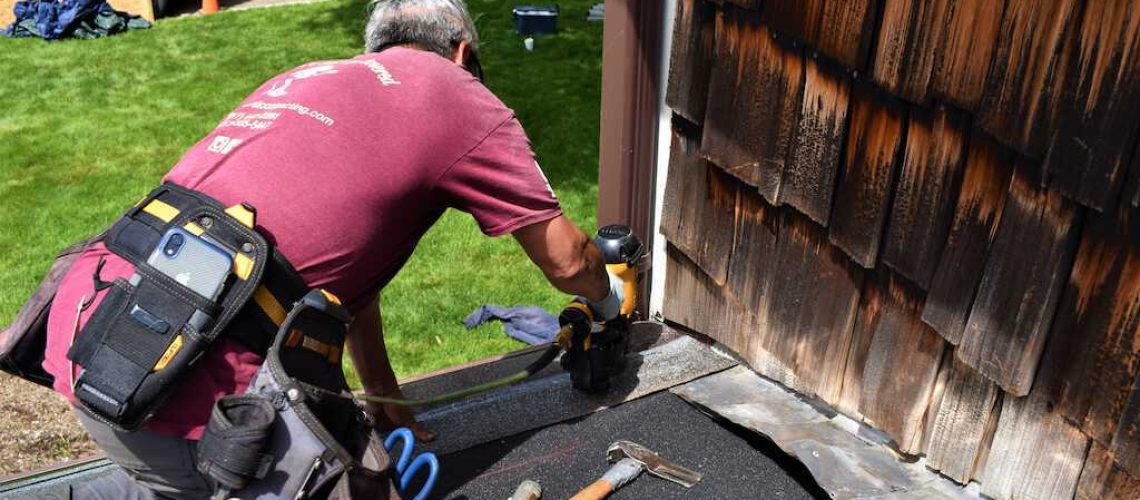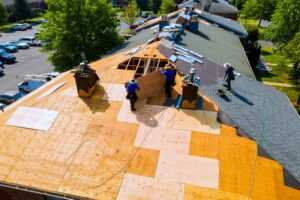According to PolicyMap, U.S. homeowners would have had to spend $126.9 billion to cover the cost of home repairs in 2018. But even if you’re able to finance your house repairs, there’s a potential funding option that may be worth considering:
Your homeowner’s insurance policy.
Could this financial windfall cut your repair bill down to zero? Keep reading to find out.
What Does Your Home Insurance Actually Cover?
When you first became a homeowner, insurance was probably one of the mortgage funding requirements put forward by the bank. And with property damage accounting for 97.7 percent of homeowner insurance claims, it’s clear that American home insurance policies are often being put to good use. Standard policies typically cover two areas:
- The actual, physical dwelling structure plus garages and sheds
- Personal property damage
If the interior or exterior of your house has been damaged, your insurance policy may be able to cover the cost of your home repairs.
These Four Factors Could Affect Your House Repair Coverage
Although technically repairs may be covered through your house insurance, it isn’t as simple as filing a claim and getting automatic approval. There are at least four key issues that your insurance provider will be assessing:
1. Your Coverage Exclusions and Limits
Remember what we said before about how the physical structure of your home is typically covered by homeowner’s insurance? Well, the situation is actually a bit more complicated than that.
If you run a business out of your garage or your guest house, for instance, you may have a hard time filing a claim. Similarly, if you have specified perils coverage and the damage was caused by a peril that wasn’t named in your policy, your insurance provider may refuse to cover the cost of your home repairs.
And that’s not all.
Even if your house isn’t vacant or a place of business, there’s another insurance coverage issue that could hurt your claim — the possibility of being underinsured. If your house has become more valuable or you’ve had renovations done, it’s possible for your insurance to only cover a portion of the necessary repairs.
2. The Type of Coverage You Have
After figuring out what your policy does and doesn’t cover, your insurance provider will then take a look at the kind of coverage you have. As a non-insurance professional, you may be thinking that all home insurance is largely the same. But sometimes your coverage type can have a huge effect on your insurance payout.
Here’s what we mean:
When you took out your homeowner’s insurance policy, chances are that you had to choose between fair market value coverage and replacement cost coverage. If you took out fair market value coverage, your insurer will compensate you for the current value of your property. Replacement cost coverage, however, allows you to replace damaged property with a similar set of items at current market rates.
If your roof needs replacing or a strip of your siding has been taken out, these distinctions can have a major effect on your repair budget.
3. How the House Got Damaged
In the United States, natural disasters were responsible for $145 billion of property damage in 2021. Here in Illinois, tornadoes and snowstorms are just a few of the common property-damaging weather events that residents have to contend with.
From your insurance provider’s perspective, it’s not enough for your windows to be broken or your roof to be torn off — the damage has to be caused by a peril that you’ve been insured against. And if the house was damaged by general wear and tear, you might be out of luck.
The good news is that standard insurance will often cover fire damage along with certain natural disasters like lightning or hail. But if your house has been destroyed by a flood or an earthquake, you might not be entitled to anything at all unless you have an additional natural disaster insurance policy.
4. The Amount of Your Deductible
Let’s say that you’ve worked your way through this list and you’re 99.9 percent sure that you’ve got a valid claim. Surely you’re in the clear at this point, right?
As it turns out, there’s still another hurdle you need to jump over for your insurance payout:
Your deductible.
Imagine that a bolt of lightning has hit your house. Instead of a devastating disaster, however, your house escapes with a small scratch. This scratch is so small that you could hire somebody to paint over it and the job would be done in under ten minutes.
After doing the math, the cost is about $50 including the paint. However, your deductible is $2,000. What do you do?
You could file a claim for it. But unless you have replacement cost coverage and an extremely expensive piece of siding, it might make more sense to just eat the cost. And your insurance provider will more than likely remind you of that.
Want More Money for House Repairs? Try Filing an Insurance Claim
Whether an electrical fire has burned down your house or a group of vandals have left you with property damage, home repairs can be quite pricey. Even so, however, getting the repairs done at a lower cost doesn’t have to involve cheap materials or cutting corners — your insurance company may be able to compensate you for the cost of getting your house repairs done.
As you weigh your home repair options, why not work with a top-rated roofing repair contractor? We offer affordable payment plans, free estimates, and top-notch customer service. Everything, from our process to our website, is designed to make fixing your roof as quick and painless as possible.
Contact us to see what we can do for your property today!




